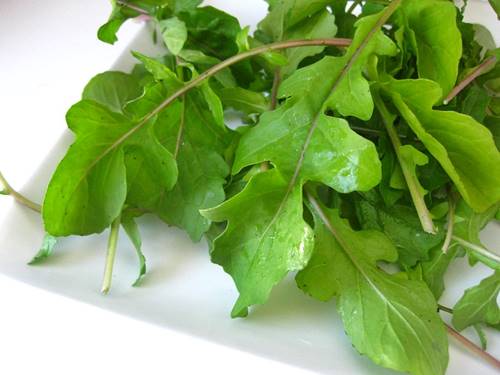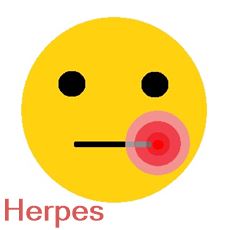Arugula, nutrition, benefits and risks
What are the benefits of Arugula?
Fact Checked
×All the content published in our website is fact checked to validate its accuracy.
Visit our guidelines web page to learn more about our strict processes regarding how we review our content's sources: reliable and reputable journals, media websites, universities, colleges, organizations, and professionals.
Our articles are based on scientific evidence, and the references are included in its footnotes, which are clickable links to sound scientific papers.
First published: 25.Nov.2023
Overview: Is Arugula a Superfood?
Arugula (Rocket in the UK) is a leafy vegetable, member of the cruciferous plants and therefore a "cousin" of broccoli, cabbage, Brussels sprouts, kale and cauliflower.
It is a healthy ingredient with a distinct peppery flavor that you can add to salads, toppings for pizzas and sandwiches; it is ideal for tortillas, omelettes and pasta and soups.
Arugula is a low calorie food packed with fiber, vitamin K, and bioactive phytochemicals that provide anti-inflammatory, antioxidant and chemoprotective effects.
In this article will review its properties, bioactive components, how to add it to your diet, and its benefits (cancer prevention, heart protection, bone health, and more), as well as its potential risks and side effects.
References and Further Reading
(1) Pedanius Discorides. Arugula. De Materia Medica.
(2) Pliny the Elder. The Natural History. John Bostock, M.D., F.R.S. H.T. Riley, Esq., B.A. London. Taylor and Francis, Red Lion Court, Fleet Street. 1855
(3) Bell L, Wagstaff C., (2019). Rocket science: A review of phytochemical & health-related research in Eruca & Diplotaxis species. Food Chem X. 2019 Mar 30;1:100002. doi: 10.1016/j.fochx.2018.100002
(4) United States Department of Agriculture. Nutrition Arugula. Accessed 27 Nov. 2023
(5) Cavaiuolo M, Ferrante A. , (2014). Nitrates and glucosinolates as strong determinants of the nutritional quality in rocket leafy salads. Nutrients. 2014 Apr 14;6(4):1519-38. doi: 10.3390/nu6041519. PMID: 24736897
(6) Norman G Hord, Yaoping Tang, Nathan S Bryan, (2009). Food sources of nitrates and nitrites: the physiologic context for potential health benefits. The American Journal of Clinical Nutrition, Vol 90:1 p1-10, ISSN 0002-9165, https://doi.org/10.3945/ajcn.2008.27131
(7) EFSA CONTAM Panel (EFSA Panel on Contaminants in the Food Chain), Schrenk, D, Bignami, M, Bodin, L, Chipman, JK, del Mazo, J, Hogstrand, C, Hoogenboom, L, Leblanc, J-C, Nebbia, CS, Nielsen, E, Ntzani, E, Petersen, A, Sand, S, Schwerdtle, T, Vleminckx, C, Wallace, H, Romualdo, B, Fortes, C, Hecht, S, Iammarino, M, Mosbach-Schulz, O, Riolo, F, Christodoulidou, A and Grasl-Kraupp, B, (2023). Scientific Opinion on the risk assessment of N-nitrosamines in food. EFSA Journal 2023; 21(3):7884, 278 pp. https://doi.org/10.2903/j.efsa.2023.7884
(8) Keller, Rosa M., Beaver, Laura, Prater, M. Catherine; Hord, Norman G., (2020). Dietary Nitrate and Nitrite Concentrations in Food Patterns and Dietary Supplements. Nutrition Today 55(5):p 218-226, 9/10 2020. DOI: 10.1097/NT.0000000000000253
(9) Brkic D, Bosnir J, Bevardi M, Boskovic AG, Milos S, Lasic D, Krivohlavek A, Racz A, Cuic AM, Trstenjak NU, (2017). Nitrate in leafy green vegetables and estimated intake. Afr J Tradit Complement Altern Med. 2017 Mar 1;14(3):31-41. doi: 10.21010/ajtcam.v14i3.4. PMID: 28480414
(10) Hu, L., Ji, J., Li, D. et al., (2021). The combined effect of vitamin K and calcium on bone mineral density in humans: a meta-analysis of randomized controlled trials. J Orthop Surg Res 16, 592 (2021). https://doi.org/10.1186/s13018-021-02728-4
(11) Azarenko O, Jordan MA, Wilson L., (2014). Erucin, the major isothiocyanate in arugula (Eruca sativa), inhibits proliferation of MCF7 tumor cells by suppressing microtubule dynamics. PLoS One. 2014 Jun 20;9(6):e100599. doi: 10.1371/journal.pone.0100599. PMID: 24950293
(12) National Cancer Institute, (2011). Cruciferous Vegetables and Cancer Prevention. Reviewed: June 7, 2012, accessed Nov. 26, 2023
(13) Tsindos, P. S., Itsiopoulos, C. and Kouris-Blazos, A., (2015). Investigation into water consumption and its influence on depression, memory problems and constipation in older persons, Journal of aging research & clinical practice, vol. 4:3 137-143, DOI: 10.14283/jarcp.2015.65
(14) Ponziani FR, Cazzato IA, Danese S, Fagiuoli S, Gionchetti P, Annicchiarico BE, D'Aversa F, Gasbarrini A., (2012). Folate in gastrointestinal health and disease. Eur Rev Med Pharmacol Sci. 2012 Mar;16(3):376-85. PMID: 22530356
(15) Blekkenhorst LC, Sim M, Bondonno CP, Bondonno NP, Ward NC, Prince RL, Devine A, Lewis JR, Hodgson JM., (2018). Cardiovascular Health Benefits of Specific Vegetable Types: A Narrative Review. Nutrients. 2018 May 11;10(5):595. doi: 10.3390/nu10050595. PMID: 29751617
About this Article
Arugula, nutrition, benefits and Risks, A. Whittall
©2023 Fit-and-Well.com, 25 Nov. 2023. Update scheduled for 25 Nov. 2025. https://www.fit-and-well.com/diet-food/arugula-benefits-nutrition-risks.html
Tags: arugula, cancer, heart, Crohn's disease, IBD, antioxidants, fiber, constipation, diet, nitrates and nitrites, food.




